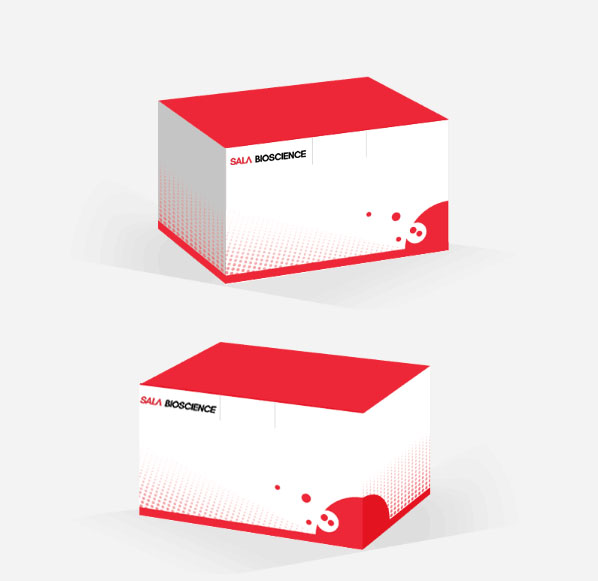Malondialdehyde (MDA) Content Assay Kit/SLBC0020
- Price:Negotiable
Product Detail

Malondialdehyde (MDA) Content Assay Kit
Note: It is necessary to predict 2-3 large difference samples before the formal determination.
Operation Equipment: Spectrophotometer
Cat No: SLBC0020
Size: 50T/48S
Components:
Extraction reagent: Liquid 60 mL×1. Storage at 4℃.
Reagent I: Liquid 42 mL×1. Storage at 4℃.
Reagent Ⅱ: Powder ×2. Storage at 4℃.
MDA working reagent: Add 20 mL of Reagent I to Reagent Ⅱ, dissolve (heat at 70℃ or with ultrasonic) and mix thoroughly. Storage at 4℃.
Reagent Ⅲ: Liquid 12 mL×1. Storage at 4℃.
Note: The working solution for MDA detection is difficult to dissolve, which can be heated at 70℃ and vibrated violently to promote dissolution. Or by ultrasonic treatment to promote dissolution.
Product Description:
Lipid peroxide is produced by the action of oxygen free radicals on unsaturated fatty acid, then resolves to compounds, including malondialdehyde (MDA). The level of lipid peroxidation can be showed by detecting the level of MDA.
Under acidic and high temperature conditions, the brown red 3,5,5- three methyl sulfamethoxazole -2,4-two ketone is synthesized with MDA and thiobarbituric acid (TBA) taking place condensation reaction, and the largest absorption wavelength is 532 nm. After colorimetry, the MDA content in the sample can be estimated.
Reagents and Equipment Required but Not Provided:
Spectrophotometer, water bath, desk centrifuge, transferpettor,1 mL glass cuvette, mortar/homogenizer, ice and distilled water.
Procedure:
1. Sample preparation:
2. Bacteria or cells:
Collect bacteria or cells into the centrifuge tube. 5 million bacteria or cells could be mixed with 1 mL of Extraction reagent. Use ultrasonication to split bacteria and cells (placed on ice, ultrasonic power 200W, ultrasonic time 3 seconds, interval 10 seconds, repeat for 30 times). Centrifuge at 8000 ×g for 10 minutes at 4℃ to remove insoluble materials, and take supernatant on ice before testing.
3. Tissue:
0.1 g of tissue could be mixed with 1 mL of Extraction reagent and fully homogenized on ice bath. Then centrifuge at 8000 ×g for 10 minutes at 4℃ to remove insoluble materials, and take the supernatant on ice before testing.
4. Serum: Detect directly.
5. Determination procedure:
6. Preheat spectrophotometer for more than 30 minutes, set zero with distilled water.
7. Add reagents with the following list:
Reagent (μL) | Test tube (T) | Blank tube (B) |
MDA working reagent | 600 | 600 |
Sample | 200 | - |
Distilled water | - | 200 |
Reagent Ⅲ | 200 | 200 |
The mixture would be incubated at 100℃ for 60 minutes (tightly close to prevent moisture loss), cooled on ice, and centrifuged at 10000 ×g for 10 minutes at room temperature to remove insoluble materials. Take supernatant in 1 mL glass cuvette, and measure the absorbance at 532 nm and 600 nm, ∆A532=A532(T)-A532(B), ∆A600 =A600(T)-A600(B), ΔA=ΔA532-ΔA600.
Blank tube needs to test once or twice.
8. Calculation:
9. Protein concentration:
MDA (nmol/mg prot)= [ΔA×Vrv÷(ε×d)×10(9)]÷(Cpr×Vs)=32.258×ΔA÷Cpr
10. Sample weight:
MDA (nmol/g weight)= [ΔA×Vrv÷(ε×d)×10(9)]÷(W×Vs÷Vsv)= 32.258×ΔA÷W
11. Cell amount:
MDA (nmol/10(4)cell)= [ΔA×Vrv÷(ε×d)×10(9)] ÷(500×Vs÷Vsv)=0.0645×ΔA
12. Serum:
MDA (nmol/mL)= [ΔA×Vrv÷(ε×d)×10(9)]÷Vs=32.258×ΔA
Vrv: Total reaction volume, 1 mL;
ε: Molar extinction coefficient, 1.55×10(5) L/mol/cm
d: light path of 96-well plate, 15px
Vs: Sample volume, 0.2 mL;
Vsv: Extraction volume, 1 mL;
Cpr: Sample protein concentration, mg/mL;
W: Sample weight, g;
400: Total number of bacteria and cells, 5 million.
Note:
If it is found that the absorbance value of the sample is too low, the boiling water bath time can be adjusted from 60 minutes to 90 minutes or longer. The detection of MDA in the same experiment needs to be extended to the same time to avoid errors.
Recent product citations:
• Guoyue Liu, Hong Mei, Miao Chen, et al. Protective effect of agmatine against hyperoxia-induced acute lung injury via regulating lncRNA gadd7. Biochemical and Biophysical Research Communications. August 2019; 516(1):68-74.(IF2.705)
• Wenzhen An, Ying Zhang, Xuan Zhang, et al. Ocular toxicity of reduced graphene oxide or graphene oxide exposure in mouse eyes. Experimental Eye Research. September 2018; (IF2.998)
• Siyang Yu, Bo Dong, Zhenfei Fang, et al. Knockdown of lncRNA AK139328 alleviates myocardial ischaemia/reperfusion injury in diabetic mice via modulating miR‐204‐4p and inhibiting autophagy. Journal of Cellular and Molecular Medicine. July 2018;(IF4.658)
• Zhigang Chen, Qiaoling Yuan, Guangren Xu, et al. Effects of Quercetin on Proliferation and H2O2-Induced Apoptosis of Intestinal Porcine Enterocyte Cells. Molecules. 2018; (IF3.06)
• Huiwen Xiao, Yuan Li, Dan Luo, et al. Hydrogen-water ameliorates radiation-induced gastrointestinal toxicity via MyD88’s effects on the gut microbiota. experimental and molecular medicine. January 2018;(IF4.743)
• Qilong Wang, Guosheng Xiao, Guoliang Chen, et al. Toxic effect of microcystin-LR on blood vessel development. Toxicological & Environmental Chemistry. Feb 2019;(IF3.547)
• Zeyong Zhang, Huanhuan Liu, Ce Sun, etc. A C(2)H(2) zinc-finger protein OsZFP213 interacts with OsMAPK3 to enhance salt tolerance in rice. Journal of Plant Physiology. October 2018;(IF2.825)
• Ying Zhao, Wengang Yu, Xiangyu Hu, et al. Physiological and transcriptomic analysis revealed the involvement of crucial factors in heat stress response of Rhododendron hainanense. Gene. June 2018;(IF2.638)
• Lijiao Gu, Hantao Wang, Hengling Wei, et al. Identification, Expression, and Functional Analysis of the Group IId WRKY Subfamily in Upland Cotton (Gossypium hirsutum L.). Frontier in Immunology.
November 2018;(IF4.259)
• Ping Shao, Pei Wang, Ben Niu, et al. Environmental stress stability of pectin-stabilized resveratrol liposomes with different degree of esterification. International Journal of Biological Macromolecules. November 2018;(IF4.784)
References:
[1] Spitz D R, Oberley L W. An assay for superoxide dismutase activity in mammalian tissue homogenates[J]. Analytical Biochemistry,1989
[2] Masayasu M, Hiroshi Y. A simplified assay method of superoxide dismutase activity for clinical use[J]. Clinica Chimica Ac
